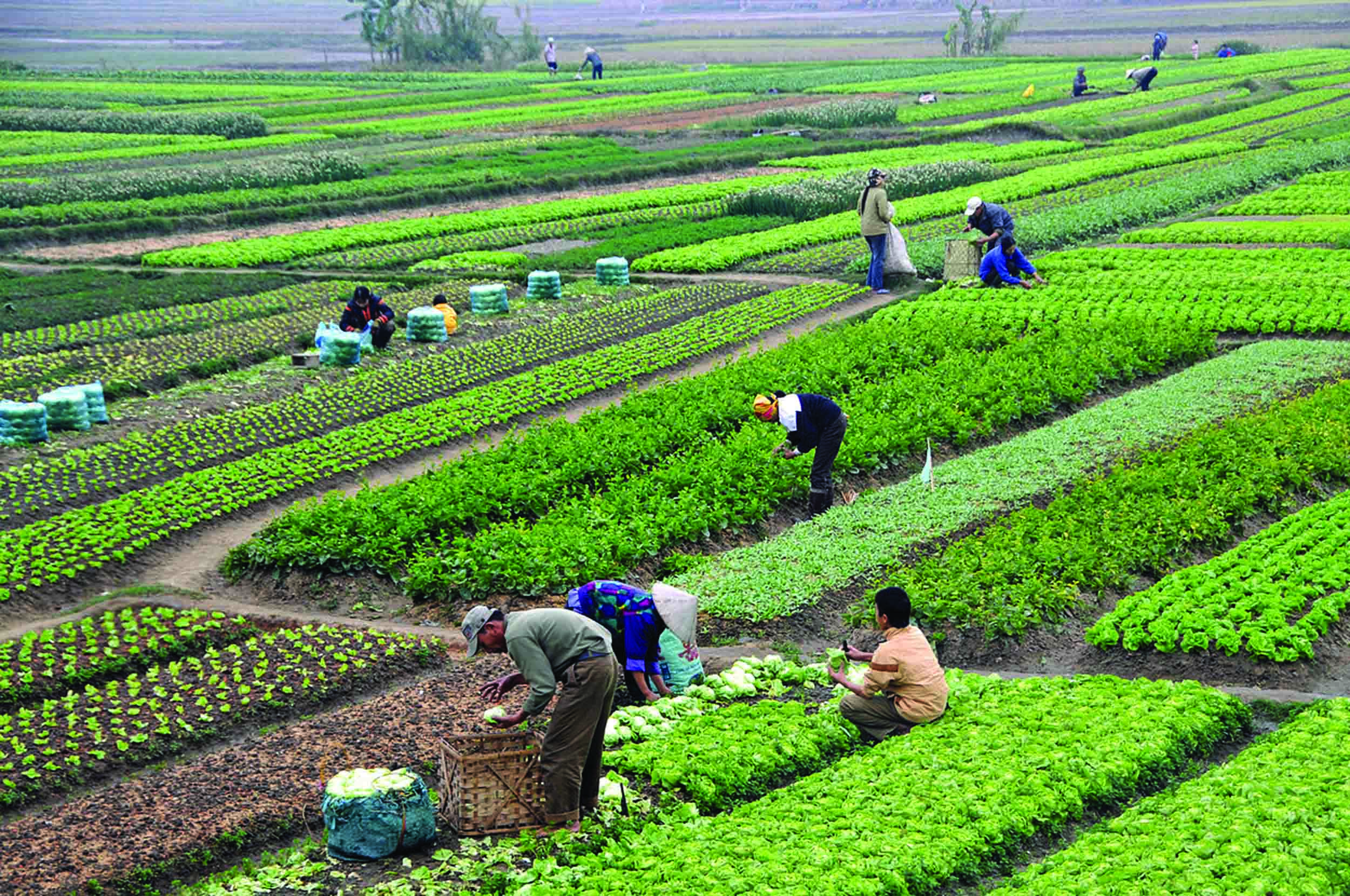
Rich nations’ reluctance to shed greed threatens mankind’s existence.
When Prime Minister Narendra Modi bucked tradition and offered solutions to climate change which is proving to be a “crisis multiplier” and India asked for immediate availability of already committed USD 100 billion per year during the Conference of the Parties (COP26) Climate Summit, the throwing of gauntlet was nothing short of a watershed moment. Significantly, this amount was committed 12 years ago in 2009, for implementing the necessary remedial measures as well as protocols for preventing the eco-system from further degradation. This fund was to be made available every year after 2020, but due to the misconception that the developing countries are responsible for the emission of the deadly gases, the financial commitments were not honoured.
During the past decade or so, the situation on the ecological front has worsened so much that there is an urgent need for a multi-dimensional initiative across the continents. In this holy war against deadly pollution, the Indian Prime Minister Narendra Modi proposes a broad spectrum all inclusive strategy supported by a one-trillion USD fund. His emphasis on ‘one sun one earth’ too has received support from the world leaders keen on shifting dependence from fossil fuel to the energy from the sun.
Both India and China, accused of substantially contributing to the emission of carbon gases, have reiterated their commitment to implement all the international protocols for the protection of the environment. The Chinese President Xi Jinping, who could not personally come to the ‘COP 26 Summit’ in Glasgow, UK, has submitted a written speech about his country’s commitment for attaining zero-emission policy. Modi too endorses India’s commitment to zero-emission. His time-bound approach and commitments overwhelmed the world leaders. He has not only pleaded for a dedicated one trillion USD for the protection of environment, but also suggested that “It’s important to track climate finance just like we track the progress of climate mitigation.”
Narendra Modi’s initiative took shape with the launch of the UK-India led Green Grids Initiative – One Sun One World One Grid. It was endorsed by over 80 countries, to mobilise political will, finance and technical assistance needed to interconnect continents, countries and communities to the very best renewable sources of power globally to ensure no one is left without access to clean energy.
In his bid to understand the gravity of the issue, this writer learns that the decadence of the environment could be traced to the developed world’s prosperity, which is rooted in the insatiable greed of more than four centuries of these erstwhile colonial powers. The multi-dimensional exploitative assault on the natural resources, is accompanied by the unquenched missions for profiteering and for this, the hegemony on the world economy has to be retained. It has now finally led us to the path of unprecedented man-made human disaster. The environment and the eco-system are threatened.
Earlier, the Kyoto Protocol adopted on December 11, 1997, was enforced on February 16, 2005. It has provided an effective platform for implementing the 1992 UN Framework Convention on Climate Change (UNFCCC), which is now being implemented with an invigorated approach adopted at the COP26 summit held at Glasgow in the UK. Earlier, in their bid to achieve a check on the deteriorating environment, the developed countries had pledged to set up an annual funding to the tune of 100 billion USD a year by 2020 to address the needs of developing countries. The promised funds are yet to pour in. However, with the two-week United Nations Climate Change Conference, also known as COP26, attended by world leaders held between 31 October and 12 November 2021, the environment issues have again received attention of the world. It has happened after a gap of nearly four years. The programme had suffered following the decision of the erstwhile US President Donald Trump, to walkout from UNFCCC. Interestingly, unofficially the US State Department representatives accompanied by some top position holders of the private sector were seen participating in the discussions held in various international forums about the climate issues. With the formal return of the US to the environment protection movement, it has received the necessary boost.
Apart from suggesting financial support to the environment protection movement, Narendra Modi has stressed for a wider approach to tackle the issues related to the climate challenges by relating them with the key areas like agriculture, fishing, housing, packaging, hospitality, tourism, fashion, water management and energy. Few may question his optimism that “I’m hopeful that decisions taken in Glasgow will save future of our next generations.” The five pledges, he reiterated before the world meet, perhaps, has overwhelmed the world leaders. He had spelt out “India will bring its non-fossil energy capacity to 500 GW by 2030, thus fulfilling her 50 percent of its energy requirement through renewable energy. India will reduce total projected carbon emission by one billion tonnes between 2021- 2030. She will also achieve a ‘net zero target’ for carbon emissions by 2070. He also reminded the world leaders that India constitutes 17 percent of the global population and her contribution to the emission has only been about five percent. India, thus, contributes in climate change mitigation much more than her industries emissions. He also spelt out a detailed road map by proposing revolutionary changes in areas like agriculture, fishing, housing, packaging, hospitality, tourism, fashion, water management and energy.
Modi has also discussed three aspects in this regard, the first of which is a need to make adaptation the key component of development policies and projects; secondly, that many traditional communities possess the knowledge to live in harmony with nature. These practices must get appropriate attention in our adaptation policies, the preservation of lifestyle per local conditions could be part of the school education; and lastly that even if the methods of adaptation are local, and the support provided to vulnerable countries must be global.
Zeroing in on Net-zero

The issue of the Net-zero pledges and their effective execution were raised at the COP26. However, it was also realized that “the current plans are vague and firm dates are not being committed.” As many as 49 countries plus the EU have pledged net-zero targets. It covers over half of global domestic greenhouse gas emissions, over half of GDP and a third of the global population. Eleven targets are enshrined in law, covering 12 per cent of global emissions.
It is yet to be seen how effectively these pledges could really be implemented. With an optimistic note, it may also be stated that if these commitments could be fully enforced, the net-zero targets might be achieved. It would shave an extra 0.5°C off global warming, bringing the predicted temperature rise down to 2.2°C. The apprehension is that most of the national climate plans will delay action until after 2030. It has caused doubts whether net-zero pledges could really be delivered that too in a real timeframe.
The blame game
There has been a blame game that China and India are responsible for emitting carbon gases, thus causing worldwide pollution. However, Modi’s statement countered the propaganda that in the year 2020, the per capita pollution, CO2 emissions, in USA was 13.68 tons. In terms of the percentage of emissions, according to various US-based research groups, China emitted 27 percent of the world’s greenhouse gases in 2019. The USA was the second-largest emitter at 11 percent, and India was third with 6.6 per cent of these emissions. The erstwhile US president Donald Trump had complained about India and China’s carbon emission levels. However, there are a few other dimensions of the issue, which he, perhaps, had deliberately ignored. During the last quarter of the 20th century, a number of chemical industries causing pollution were shifted to India from various developed countries. It had caused health hazards in the states like Gujarat and Maharashtra. In the states like Punjab, Haryana and in the districts of western UP, a large number of cancer hospitals have mushroomed in recent years due to the excessive use of chemicals in the agriculture. Similarly, China with its cheap labour has become the hub of the manufacturing of finished goods, thus serving the western capital. The profits generated from the toils of the Chinese or other Asian workers are finally siphoned off to the companies of the rich countries.
In this context, the developed world should realize that in fact, they have unleashed multi-pronged destruction of natural wealth, both flora and fauna. Therefore, the rich nations have to come forward for achieving zero carbon emission by 2050. It is necessary for saving our planet. These multi-dimensional challenges were discussed during the COP-26 sessions.
On the issue of climate protection, Modi’s vision or approach appears to have been further augmented with Jinping’s written statement. The Chinese leader elaborates on China’s propositions on climate governance and shares his country’s achievements and contributions to the climate governance too was quite heartening. He has offered China’s solution to major tasks of our times including how to address climate change and revitalize the world economy. He puts forward three propositions, namely, upholding multilateral consensus, focusing on concrete actions, and accelerating the green transition. He stressed that China, guided by the vision of a community of life for man and Nature, is committed to a green and low-carbon development path that gives priority to ecological conservation. The Chinese policy framework has identified the timetable, roadmap and blueprint for China’s carbon peaking and carbon neutrality.
Environmental issue draws world’s attention
The COP 26 is expected to strengthen the recommendations of the Parties to the Kyoto Protocol (CMP 16), and the third session of the Conference of the Parties serves as the meeting of the Parties to the Paris Agreement (CMA 3).
With the success of COP26, it is hoped that the world leaders would make necessary efforts to raise the resources and also would pledge on a new and more ambitious post-2025 climate finance goal. Earlier, just a week before the COP26, the Chinese had participated in the G20 meeting. The environment issue, especially in the context of the climate-vulnerable countries, was also raised. It was emphasized that the G 20 should take effective follow-up measures for maintaining the momentum initiated during the G-7 conference. Earlier, in March this year, the British initiative of holding the meeting of ministers on the issue of Climate and Development was aimed at unlocking political and policy initiatives to address the critical challenges faced by climate-vulnerable countries and communities in delivering on the Paris Agreement and the Sustainable Development Goals.
In fact, these initiatives before the COP26 have enabled the world leaders to rebuild the trust for implementing an ambitious climate deal. In this context, the meeting of the finance ministers of the Vulnerable Twenty Group is expected to usher in a collaboration of economies most at risk from climate change.
Boris Johnson’s chilling warning
In his inaugural address, the British Prime Minister Boris Johnson opened the summit in Glasgow with a warning that the world is strapped to a “doomsday device” and that time is running out in the fight against climate change. “It was here in Glasgow 250 years ago, that James Watt came up with a machine that was powered by steam that was produced by burning coal. We brought you to the very place where the doomsday machine began,” Johnson said, pointing out that climate change has been triggered off by the burning of coal, oil and natural gas.
António Guterres, Secretary-General of the United Nations in his remarks said that the six years since the Paris Climate Agreement have been the six hottest years on record. “Our addiction to fossil fuels is pushing humanity to the brink. We face a stark choice – either we stop it or it stops us. It’s time to say, ‘enough’,” he said.
“Enough of brutalising biodiversity, enough of killing ourselves with Carbon, enough of treating nature like a toilet, enough of burning, drilling and mining our way deeper. We’re digging our own graves. Our planet is changing before our eyes,” Guterres warned.
COP26 may lead to effective damage control on saving Mother Earth. Apart from the world leaders, there were representatives of the youths, representatives of the corporate and NGOs. The UK government, which had jointly hosted COP26 with Northern Ireland, circulated a detailed document just a few days before the conference. The document highlights the issues as well as possible solutions for the participants. It stated four key areas to be focused on the issues related to climate and development; the quantity and quality of finance, accessibility of climate finance, wider fiscal issues and managing and sustaining debt and strengthening finance and support for responding to climate impacts.
Hope for Mankind: USA, China enter climate deal
A spectacular joint USA-China announcement on November 10-11 has scripted a new cooperation doctrine for saving the earth from the deteriorating environment. The world’s two most polluting countries, USA and China, now would be jointly working for containing the growing temperature of earth. Their cooperation reinvigorates the Paris accord signed in 2015.
They have agreed to establish a working group on enhancing climate action in the 2020s by adopting the multilateral processes. Their aim is to keep the earth’s temperature “well below” 2 degrees Celsius beyond pre-industrial levels, and if possible, not to exceed 1.5 degrees Celsius.
The surprising decision was announced just 48 hours after the forceful speech of the former US President Barrack Obama at COP26, who had promoted the ‘save earth’ mission during his presidency. It was thwarted by his successor, Donald Trump. He had cautioned that unless the young people campaign for the protection of environment, their future would be bleak, if not doomed. Obama was also critical of the policies of Russia and China towards this vital issue.
The signatories on behalf of the two big powers, US climate envoy John Kerry and his Chinese counterpart Xie Zhenhua at the Glasgow UN climate conference or COP26 have promised to take “enhanced climate actions” to meet the central goals of limiting warming of the earth, especially during this decade. They also agreed to adopt their strategy “on the basis of the principle of common but differentiated responsibilities and respective capabilities as well as taking into account national conditions.”
The UN secretary-general Antonio Guterres has welcomed a China-US joint declaration. The mankind, perhaps, now could sigh of relief with the declaration of US and China, the world’s two biggest greenhouse gas emitters.
The Indian coastal areas that are staring at climate disaster

The total length of the coastline of India, including Lakshadweep and Andaman & Nicobar Islands is estimated to be 7516.6 km.The country faces the turbulent Bay of Bengal in the east, the Arabian Sea in the west, and the Indian Ocean to the south. India’s most industrialized and developed parts are situated on the coasts in Maharashtra, Gujarat, Tamil Nadu, Andhra Pradesh, Odisha and Gujarat.
It is predicted that 65 percent of Mumbai, the financial capital of India, and other coastal towns and districts will be submerged. Apart from the main city centers like Nariman Point, Colaba and Dadar and Bandra, Mumbai’s satellite towns like Mira-Bhayander, Vasai, Virar and Nalasopara are likely to be adversely affected. The other coastal regions like Murud, Alibaug and Konkan-Malvan stretch, Chiplun and others are also staring at the climate disaster.
The big towns of Gujarat such as Surat and Bharuch on the main railway line connecting Mumbai with Ahmadabad too face existential threat with the rising sea levels. The proposed bullet trains will also pass through these industrial hubs. Apart from them, the other coastal cities such as Bhavnagar, Bhuj, Kutch and many other port cities of the state too might be devastated.
The tourist destination, Goa, known for its pristine beaches Mapusa, Chorao Island, Mulgao, Corlim, Dongrim and Madkai might be worst affected by 2050.In South Goa, the areas, Camorlim, Macasana and Mobor Beach are likely to suffer.
In Karnataka, the climate change effect would impact the popular coastal areas like Kawar, Gokarna, Kumta, as well as various locations in Udupi, like Thekkal Thoda, Mattu Beach, Malpe etc. Near Mangalore, a few regions that would be affected are Maravoor Dam, New Mangalore Port, Kodikal, Kodi etc.
Similarly, in Kerala, regions surrounding Kannur like Azhikode, Munderi, Ezhome, Pazhayangadi might be submerged under the rising sea water. The state’s industrial and business towns of Arimbut, Thekkumkara, Peramangalam, and Ernakulam might face disasters due to the high water levels. The Cochin port too faces existential challenges.
In Tamil Nadu, the industrial and IT hub might be wiped out due to climate change. It is estimated that the coastal areas like Chidambaram, Mahabalipuram, Kalpakkam, Marakkanam, Chunampet, Thiruporir, Velachery would be facing water-logging and even storms. Chennai’s almost 45 percent area might be the worst sufferer along with northern regions of Ennore, Minjur, and Pulicat.
In Andhra Pradesh and Telangana, the worst affected areas would be Sullurupeta, Kadapatra, Venadu, Sriharikota, Chinthavaram, Thamminapatnam, Juvvaladinne etc.
In Odisha, its ports were international trading centres. The famous Bali Yatra is a day of festivities in the state. However, it is estimated that the state’s major seashore cities and ports such as Brahmapur, Gopalpur, Chatrapur, as well as regions surrounding Chilika Lake like Brahmagiri, Satapada, Barkul too are being threatened with the rise in the sea-level. The northern areas could be the worst affected by this including most of Bhitarkanika National park, Paradeep, Nuagaon, Pattamundai, Chandbali, Dhamara, Kendrapara and others.
The worst sufferer in West Bengal could be Kolkata, which had served as the capital of British India for more than a century. Its localities like Baranagar, Rajpur Sonarpur, and several regions surrounding Howrah like Santragachi, Balitikuri etc. might be wiped out.The other regions in Kolkata that are going to be equally affected are Digha, Contai, Mandarmani, Nandakumar, Tamluk, Patashpur, Jaynagar etc.
“Climate change is no longer a future problem. It is a problem now,” said Inger Andersen, Executive Director of UNEP. “To stand a chance of limiting global warming to 1.5°C, we have eight years to almost halve greenhouse gas emissions: eight years to make the plans, put in place the policies, implement them and ultimately deliver the cuts. The clock is ticking loudly.”
Some bustling world cities may go under water

The Kyoto Protocol was an international effort for implementing the objectives of the UNFCCC to reduce the onset of global warming by reducing greenhouse gas concentrations in the atmosphere to “a level that would prevent dangerous anthropogenic interference with the climate system”. The seven greenhouse gases listed were carbon dioxide (CO2), Methane (CH4), nitrous oxide (N2O), hydrofluorocarbons (HFCs), perfluorocarbons (PFCs), and sulfur hexafluoride (SF6), Nitrogen trifluoride (NF3).
Anyone can access the impact of global warming by accessing the internet about how coastal areas of the earth in particular year in future would be adversely affected by rising sea levels. The current predictions are that if the remedial steps were not taken the temperature might be enhanced by three degree Celsius in 2050 and beyond leading to the rise in sea levels. It might wipe out large low-lying areas in the flourishing cities such as Miami, Rio de Janeiro, Osaka and Shanghai. It is being predicted that Miami might become the most vulnerable major coastal city in the world. The coastal areas across the continents might suffer due to the rise in the sea levels accompanied by storm-related coastal flooding.
26 nations vow to tweak policies for creating sustainable agriculture
Twenty-six nations set out new commitments to change their agricultural policies to become more sustainable and less polluting, and to invest in the science needed for sustainable agriculture and for protecting food supplies against climate change, laid out in two ‘Action Agendas’. All continents were represented, with countries including India, Colombia, Vietnam, Germany, Ghana and Australia.
Examples of national commitments aligned with this agenda include:
- Brazil’s plan to scale its low carbon farming programme to 72milion hectares, saving 1 billion tonnes of emissions by 2030.
- Germany’s plans to lower emissions from land use by 25m tonnes by 2030
- The UK’s aim to engage 75% of farmers in low carbon practices by 2030
The UK also announced funding of £500m to support the implementation of the Forest, Agriculture and Commodity Trade (FACT) Roadmap that was launched during the World Leaders Summit earlier this week, in which 28 countries are working together to protect forests while promoting development and trade. A further £65 million will support a ‘Just Rural Transition’ to help developing countries shift policies and practices to more sustainable agriculture and food production.
Commitments made by countries would help in implementing the Glasgow Leaders’ Declaration on Forests and Land Use which is now endorsed by 134 countries covering 91% of the world’s forests. The Declaration aims to halt and reverse forest loss and land degradation by 2030.
The World Bank will commit to spending $25 billion in climate finance annually to 2025 through its Climate Action Plan, including a focus on agriculture and food systems.
Representatives from Indigenous and local communities will be participating in events throughout nature day. As stewards of 80% of the world’s remaining biodiversity, Indigenous People are leaders in how to develop nature-based, resilient and effective solutions to climate change. Nature day also follows the announcement on Ocean Action Day on 5 November of over ten new countries signing up to the ‘30by30’ target to protect 30% of the world’s ocean by 2030. These were: Bahrain, Jamaica, St Lucia, Sri Lanka, Saudi Arabia, India, Qatar, Samoa, Tonga, Gambia and Georgia. The target is now supported by over 100 countries.
Glasgow Leaders’ Declaration on Forests and Land Use
Launched on 2 November, 134 countries covering 91% of the world’s forests (including Brazil, China, Russia and Indonesia) have now endorsed the Glasgow Leaders’ Declaration on Forests and Land Use, committing to halt and reverse forest loss and land degradation by 2030.
The full package of commitments and action will also include: Agricultural reform and innovation:

A new global initiative launched to reach 100 million farmers at the centre of food systems transformation with net zero and nature positive innovations by 2030 via a multi-stakeholder platform convened by World Economic Forum (WEF) involving farmers’ organisations, civil society, businesses and other partners.
The Policy Action Agenda for the Transition to Sustainable Agriculture sets out pathways and actions that countries can take to repurpose public policies and support to food and agriculture, to deliver these outcomes and enable a just rural transition. It also sets out actions and opportunities for other stakeholders (international organisations, food producers, financial entities, researchers, civil society and others) to channel their expertise, knowledge and resources in support of this agenda.
New UK funding of £38.5m over 2 years to the CGIAR, the world’s leading agricultural science and innovation organisation, which will create and scale new crops and technologies yielding climate, nature, health, gender and economic impact. The CGIAR was formerly called the Consultative Group on International Agricultural Research.
More than 35 world leaders have also backed and signed up to the new Glasgow Breakthrough Agenda that will see countries and businesses work together to dramatically scale and speed up the development and deployment of clean technologies and drive down costs this decade. Signatories include the US, India, EU, developing economies and some of those most vulnerable to climate change – collectively representing more than 50% of the world’s economy and every region.
The aim is to make clean technologies the most affordable, accessible and attractive choice for all globally in the most polluting sectors by 2030, particularly supporting the developing world to access the innovation and tools needed for a just transition to net zero. Leaders from South Africa, the United Kingdom, the United States, France, Germany and the European Union have announced a ground-breaking partnership to support South Africa with an Accelerated Just Energy Transition.
The Rockefeller Foundation, alongside IKEA Foundation and Bezos Earth Fund, launched the Global Energy Alliance for People & Planet with an initial $10 billion of funding from philanthropies and development banks to support energy access and the clean energy transition in the Global South, in strategic partnership with the UK-led Energy Transition Council.












